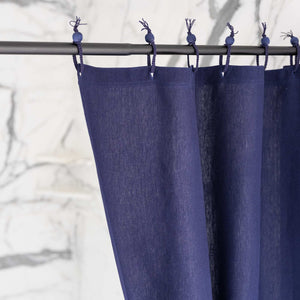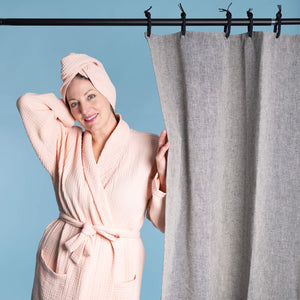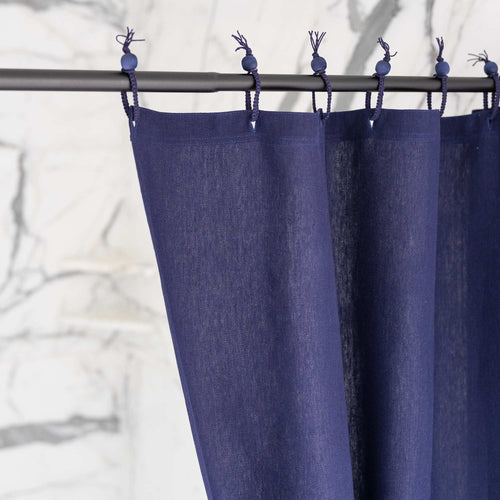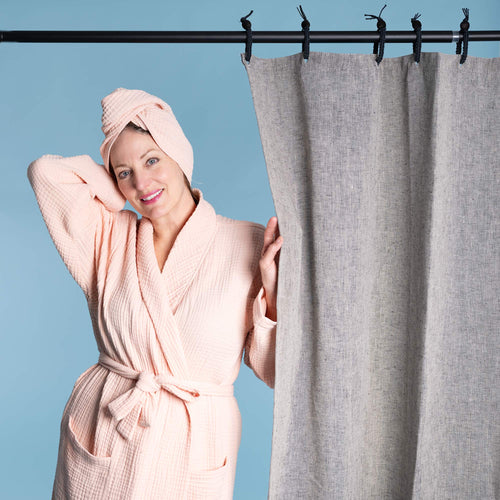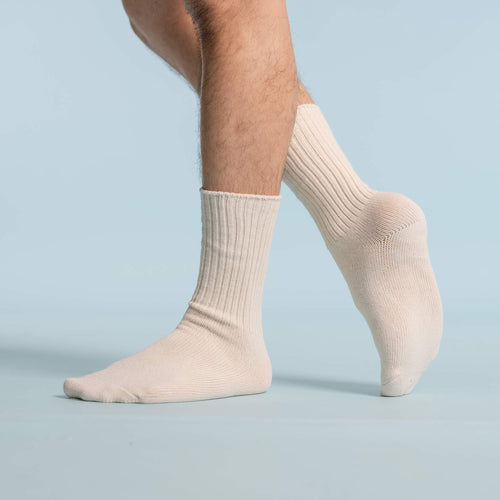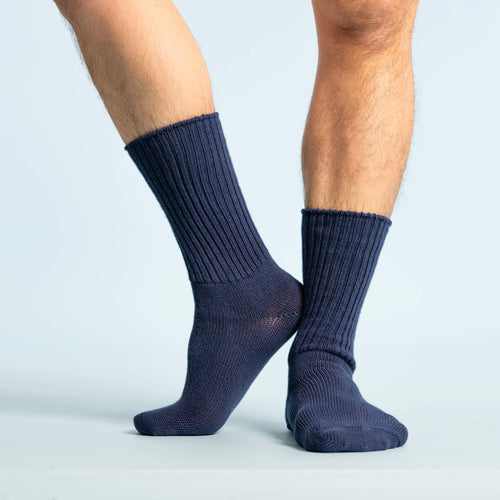 Multiple Chemical Sensitivities MCS & TILTYou've come to the right place! Hypo-allergenic clothing, bedding, & bath: pure & sustainable. What is Multiple Chemical Sensitivities? The search is over. Finally, a range of pure organic products that work. Welcome to our hypoallergenic store offering relief from the world of chemicals! At Rawganique, our customers love us as much for what we leave out of our sweatshop-free organic products (the nasties such as PVC, BPA, dioxin, formaldehyde, bleach, chemical dyes, sweatshop-free labor, etc) as for the good stuff we put into our products (100% natural fibers from GMO-free organic agriculture). Every time we hear from a customer that they live 24/7 in our organic clothes (our 100% organic fleece, 100% organic linen, & 100% organic hemp knit lines are perennial favorites), we are deeply touched and inspired to do even better, to offer as many products as possible to fulfill the everyday needs of chemically sensitive people. In 1999, we started manufacturing organic products because we had found out we were chemically-sensitive (& chemically-averse) and could not find clothing, bodycare, and home products that our compromised immune systems could tolerate. One of the main inspirations that keep us going is knowing that our customers can't take products made by other manufacturers, even organic ones, due to the formaldehyde, pesticide residues (due to poor oversight of even supposedly organic agriculture), or other chemicals used in the production process. We take seriously the responsibility of providing truly pure and sustainable products. Our purpose in existing is closely tied to our desire to offer organic clothing and home products that allergic people can wear, live in, and sleep on without adverse effects. Even though only some of us are diagnosed with chemical sensitivities and others are designated as "normal," we as humans are all sensitive to exposure to toxic chemicals, no matter how small a dose. As more and more chemicals are released into the environment, the number of people with multiple chemical sensitivities continue to rise worldwide, with people who were "normal" one day receiving the diagnosis that their bodies have had enough and that they are now chemically sensitive. We keep manufacturing as close to home base as possible by offering products made in USA, Canada, and Europe. No sweatshop, no cheap labor for us: we value human dignity too much to ever consider such options. If you have MCS (Multiple Chemical Sensitivities), the world can be a truly scary place. The most common household and clothing items could trigger asthma attacks, headaches, inflammation of skin and joints, fogginess, fatigue, reduced memory and mental alertness, and indigestion. Things like industrial carpeting, cleaning liquids, scents, detergents, shampoos and soaps; paint; smoke; pesticide residues in foods, rubber in elastic and kitchen gloves are used by many people daily, yet for you they can cause a serious crisis. Even worse, the culprits are a moving target: things you had no problem with one day can do the worst to you the next, and ever new sensitivities to ever lower levels seems to be a daily experience. Seriously, how can you avoid plastics in this day and age? Adding insult, or rather, isolation to injury, this rising plight is not even commonly acknowledged by Medical Doctors and the general population. And you must also put up with being considered a hypochondriac, fancying allergy triggers where they supposedly don't exist (but they do, and we know too well that they do, because we are ourselves chemically sensitive). At Rawganique.com, we offer practical solutions, borne out of our own necessity to avoid chemicals as for our passion in solving everyday problems of exposure to chemicals). For example, we offer 100% natural and organic solutions in our one-ingredient shampoos, facial cleansers, facial toner, and laundry detergent. Yes, just one ingredient in each product: it's organic, and it works! So simple and yet so effective. We scoured the world for ancient recipes and traditions that have been tried and tested for generations to bring you truly unique solutions that just work. Without the chemicals. See our Bodycare Section for a complete list of our offerings. It is important to get rid of as many sources of "contamination" in your living space as possible. Look to zero-VOC milk-based paints and solid wood furniture with organic cushions and solid wood or tile flooring without varnish. Change conventional beds and bedding for organic ones made in a facility that manufactures only organic products so as to avoid cross-contamination. Rawganique.com offers organic cotton, hemp, and linen products for the whole home, as well as organic clothing and accessories that are made without harsh chemicals, heavy metals, and common industrial intoxicants such as dioxin, BPA, PVC, and formaldehyde. In purifying your home, you can turn it into a sanctuary of purity. It is best to avoid all synthetic fibers and everything non-organic, anything that has conventional dyes, softeners, and anti-wrinkling properties. Many of our customers and friends even go so far as to avoid all products made in countries where even organic standards are suspect, where chemicals are used even though organic regulations forbid them. Many merchants have been found guilty of claiming their products are organic when in fact only 30% of the fibers used are organic, with the rest being conventional fibers. As a small manufacturer, we have the advantage of overseeing every step of production in the USA, Canada, and Europe, to make sure that the growing, processing, cutting, sewing, and dyeing of our products are done to the strictest and highest European and North American standards. Many of our MCS customers have found instant relief upon switching to our organic clothing and home products from either conventional products or some other so-called organic products from other sources. For 14 years, we have made a complete range of pure, organic, sweatshop-free products from organic cotton, hemp, and linen. - Avoid all chemical cleaning substances, bodycare products, scents, etc. We carry a wide range of organic, purely natural, chemical-free alternatives. And none the worse for it - many customers report that not only can they tolerate our products, but they also work surprisingly well. Remember, there was human life before the age of chemical pollution, and a much healthier life at that! - Concentrate your limited resources on those items giving you the most benefit. Sleep only on the purest, organic bedding; in sheets made of natural organic linen or hemp, undyed and unbleached - you spend a third of your life in bed, so that is the place to start with. Anything with fire-retardant chemicals has to go. Our mattresses use just a thin layer of wool on the outside to achieve sufficient fire-retardancy without any chemicals at all. - Your intimate areas have soft absorbing membranes that make for the most vulnerable area of contact with chemicals. Wear only underwear, T-shirts, sleepwear, and bras that are organic, natural, and free of any chemicals. - For mental and physical health, include yoga and mediation in your daily routines - but only using clothing and mats that are organic and chemical-free. - Avoid petro-chemical dyes. We offer a wide range of either naturally beautiful undyed clothing items, bed sheets, towels and bathrobes, even in color-grown green and brown organic cotton; or petrochemical-free eco fiber-reactive and natural dyes that most people with MCS can tolerate just fine. - All-important is the fuel your body runs on. Eat only organic foods: the less processed the better. We connect to a great many people with MCS who have lived freer, healthier, happier lives after purifying their private spaces. Here's to a future world that’s as clean as our distant ancestors lived in! If you a merchant doesn't state the country of origin, ask! If a merchant says an item they sell is "imported," ask where from. Chances are, if it's not stated where an item is made, it is probably made in a country rife with sweatshop working conditions and lax regulations when it comes to worker and human safety and toxic chemical use. Be informed. Toxicant-induced Loss of Tolerance (TILT): Severe MCS is on the rise wold-wide, causing great suffering, isolation, and loss of income. Yet until recently, evidence has been mostly anecdotal and subjective, and the condition dismissed as imaginary infliction of a hypochondriac mind. This article discusses biological research results not only showing that the condition is real, but also pointing to possible causal links involved. Claudia Miller, a medical researcher at the University of Texas, calls the phenomenon 'Toxicant-induced loss of tolerance (TILT)'. She describes two stages: First, a person becomes ill from direct contact with a harmful man-made poison. Second, even after the initial trigger is removed, the neurological and immune systems remain damaged, with trigger levels in the brain permanently lowered and more substances becoming powerful triggers. We simply didn't understand enough of how the body tries to detoxify itself, and what can make detoxing efforts a chronic condition. In simple terms, it is like an alarm that is not removed after the initial danger is gone. One of Miller's contributions is a questionnaire that has been proven to be very effective in identifying people who are more prone to TILT-symptoms. The recognition that TILT requires not only the toxicant, but also a susceptible host, has encouraging practical implications, allowing to prevent the onset of TILT by identifying triggers for those in danger, and avoiding the initial contact. Interestingly, she also found a high incidence of certain behavior constructs in TILT sufferers, such as shyness, asthma, depression, and panic disorders. This can be seen as defensive behavior reflecting a need to avoid contact; and another indicator helping identify people prone to TILT symptoms. To me, with MCS as well as a history of seizures, a particularly fascinating aspect of Miller's work is her recognition of similarity between seizure disorders and severe MCS. In both cases, a recurring low-level trigger sometimes, but not always, results in a grave and dangerous reaction that is reflected in a measurable spike of electricity and blood flow in the brain. And she found a direct possible channel for the chemical trigger to quickly reach the neurons in the brain: the many millions of olfactory neurons going from the nose directly to the brain, without even a blood-barrier. Where does this leave Miller and the growing number of people whose lives have been turned upside down by severe MCS? Finding hard physiological evidence for the disorder is helpful, but how can the condition be prevented or controlled? The article briefly discusses positive results from electro-shock therapy; but beyond that, identifying persons at risk, and avoiding initial triggers, all bets are off. What's so exciting for me is that Miller's work opens so many promising avenues for future research. That gives hope; and through hope, strength to go on. From Discover Magazine: >> Multiple Chemical Sensitives (MCS) / Toxicant-induced Loss of Tolerance (TILT) : Extreme Chemical Sensitivity Makes Sufferers Allergic to Life (Its sufferers were once dismissed as hypochondriacs, but there's growing biological evidence to explain toxicant-induced loss of tolerance (TILT)) One night in August 2005, Scott Killingsworth, a 35-year-old software designer in Atlanta, dragged his dining-room table out to the porch and lay down on it. The house he’d just rented — on 2 acres in an upscale suburb north of the city — was meant to be relatively free of man-made chemicals, his refuge from the world. For years he had been experiencing debilitating reactions to a cornucopia of common chemicals that others don’t even notice. But this house, like the one before it, was making him sick with flu-like symptoms — nausea, headaches and muscle stiffness. Lying on the table and breathing in fresh air, Killingsworth thought back to the morning seven years ago when his office was sprayed with Dursban, a potent organophosphate pesticide that has been banned for indoor use since 2000. Within minutes of the pesticide treatment, he was unable to concentrate, and he felt like he had a bad flu. When he returned to the office a week later, he felt sick again. He asked his supervisor to move him to a different office. “I thought that was the end of it,” he recalls. “But that was the beginning of it.” Instead of recovering, he got sicker as each year passed. Newly renovated buildings, fresh paint, gasoline odors, pesticides, herbicides — the list of substances he reacted to grew longer and longer. After his apartment was painted by mistake one day while he was at work, he got so ill that he took a leave of absence and moved. But each subsequent home left him with the familiar panoply of headaches, flu-like symptoms, insomnia, the inability to concentrate and fatigue. After sleeping on his dining table for a week, he bought a camping cot and slept on it each night for years. When he became reactive to the almost imperceptible out-gassing of chemicals from his own computer, he switched to a Bluetooth keyboard and looked at his computer monitor through the porch window. Before he got ill, Killingsworth had a girlfriend and an active social life. As his unusual illness escalated, he began to live like a hermit. During his final two years in Georgia, he had fewer than 10 visitors, he says... Today, in his 40s, he lives in a renovated travel trailer specially designed for his sensitivities: It has porcelain tile floors, sealed walls and sealed wood cabinetry. He camps alone and with friends. He relies on solar power, hauls his own water at times and moves seasonally to avoid extremes of heat and cold. Most days, however, he can tolerate the trailer only for a while, even with windows open, and sleeps on a cot in the back of his truck, under the protective camper shell. A Two-Step Process If anybody can understand what happened to Killingsworth, it is physician Claudia Miller, an environmental health expert at the University of Texas School of Medicine in San Antonio, who studies a phenomenon she calls toxicant-induced loss of tolerance (TILT). The word toxicant refers to a man-made poison, such as Dursban, whereas a toxin is a naturally occurring poison produced by living cells or organisms, such as spider venom. TILT, says Miller, is a two-step process: First, a susceptible individual gets sick after toxic exposure or exposures. But then, instead of recovering, the neurological and immune systems remain damaged, and the individual fails to get well. The sufferer begins to lose tolerance to a wide range of chemicals common in everyday life. The latest research, both in the United States and abroad, suggests that brain processing itself is altered so that the neurological setpoint for sensitivity falls. The person, now sick, becomes highly sensitive to chemical exposures. The individual is like a fireplace after the original fire has died down: The embers still glow a brilliant orange, ready to burst into flame with the slightest assistance. Individuals with TILT can become increasingly more reactive over time, until they find themselves responding adversely to the mere whiff or dollop of everyday chemicals — at concentrations far below established toxicity. The triggering substances are often structurally unrelated and range from airborne molecules to ordinary drugs and supplements, lotions, detergents, soaps, newsprint and once-cherished foods like chocolate, pizza or beer. Exposures result in a bewildering variety of symptoms such as cardiac and neurological abnormalities, headaches, bladder disturbances, asthma, depression, anxiety, gut problems, impaired cognitive ability and sleep disorders. Because so many substances seem to spike these overlapping reactions, and because not everybody is universally reactive to exactly the same substances, it’s hard to ferret out cause and effect. And that has, until recently, left these individuals consulting many different specialists, presenting a picture that looks deeply neurotic. When chemically intolerant patients first came to the attention of the medical profession in the 1980s, their condition was called “multiple chemical sensitivity” (MCS), and there was enough curiosity to spark studies. But those studies never turned up anything definitive, and nobody thought to look at the actual processing going on in the brain... Read full article in Discover Magazine: |
